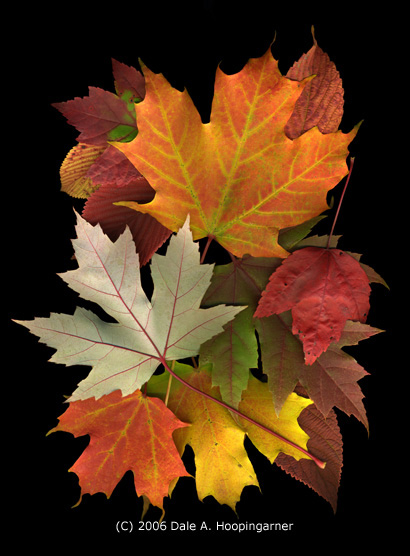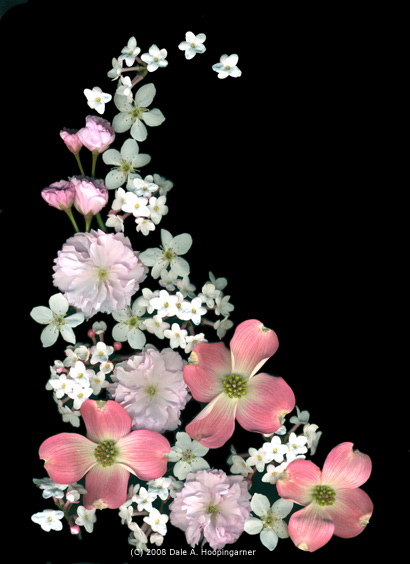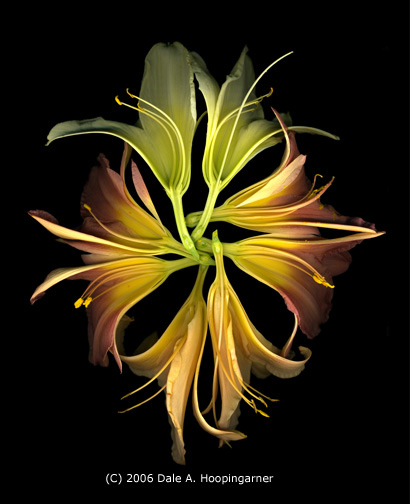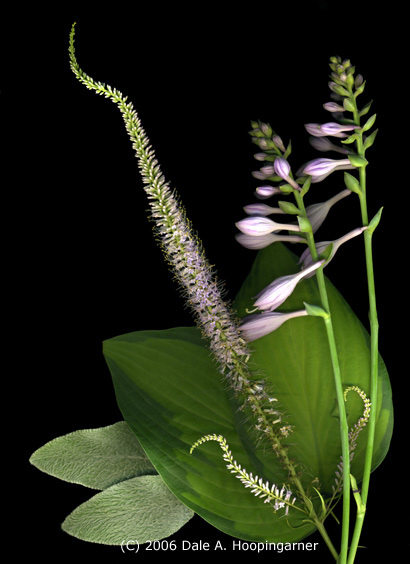
| technic |
| artists |
| links |
| material |
| contact |
| home | bibliography | scannotique |
| exhibitions |
![]()
Dale Hoopingarner

Fall Leaf Collage II

Lavender

Lily Kaleidoscope

Shibumi
| Who is Dale Hoopingarner | ||
Photography can preserve the ephemeral nature of flowers...but a computer scanner? Today's digital scanners can do a lot more than just digitize checks or old photographs -- they can be used to capture the vibrant color and depth of fresh flowers. I first learned the scanner photography technique from Ellen Hoverkamp, a Connecticut-based artist and teacher, through a seminar at Tower Hill Botanical Garden in Boylston, Massachusetts. My work tends more towards specimens and "growing" settings, whereas Ellen's artistry is displayed with her tasteful bouquets and elegant arrangements. All Images Copyright
See more of Dale's creations About the Art What you see on this page aren't photographs – at least not in the traditional sense. The camera in this case is a high-end digital scanner, with the flowers arranged face down on the open glass of the scanner and the image taken in a darkened room. The picture is then retouched with a computer only to remove any stray pollen or dust, being careful to never alter the original arrangement, preserving the integrity and natural beauty of the plants. Since this editing is often done at a level of nearly 1/300th of an inch level, each picture can require 10 to 20 hours or more to complete. |
||
